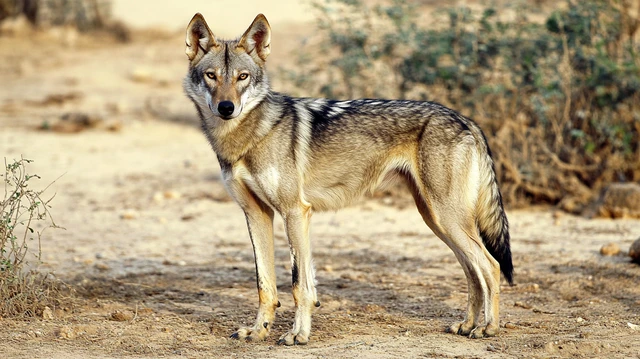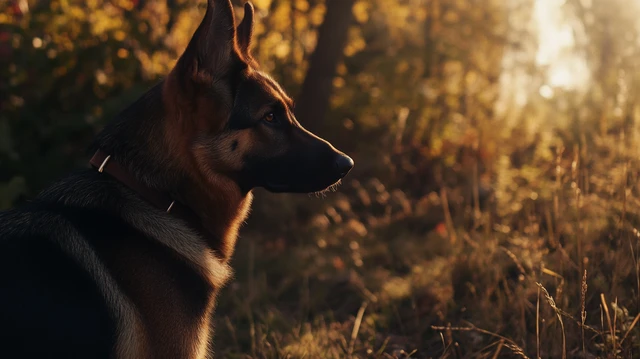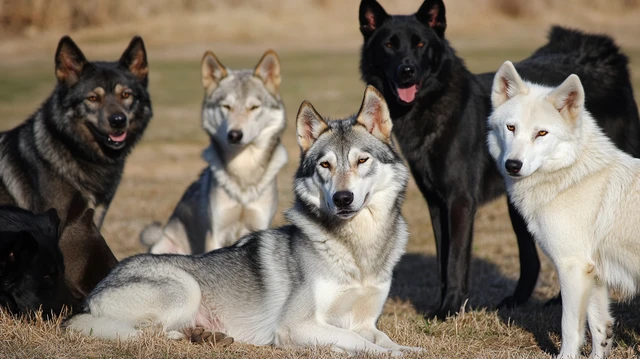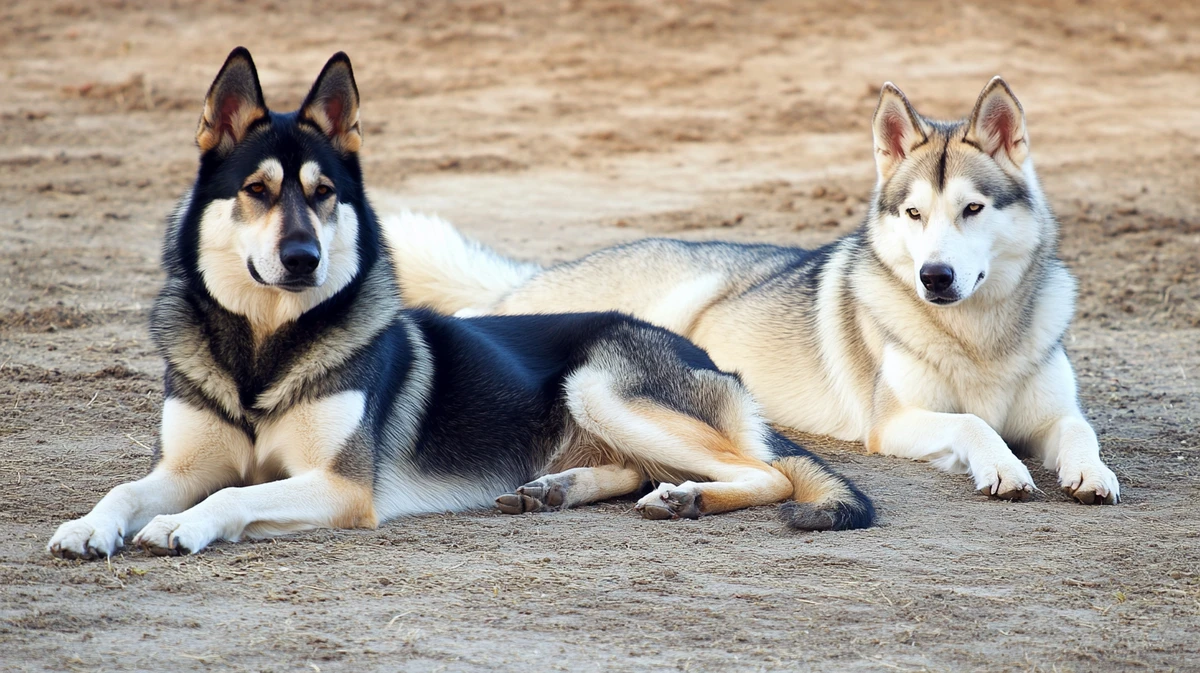Imagine a creature that embodies the untamed spirit of the wild yet shares the loyal companionship of a domestic dog. This captivating blend is found in wolf-dog hybrids, animals that have piqued the interest of pet enthusiasts and wildlife admirers alike. Their unique genetic makeup offers a fascinating glimpse into the intersection of nature and nurture.
As the allure of owning such an extraordinary animal grows, it’s essential to delve into the complexities surrounding wolf-dog hybrids. From their unpredictable behaviors to the legalities of ownership, understanding these hybrids is crucial for potential owners and curious minds.
This comprehensive guide aims to shed light on the multifaceted world of wolf-dog hybrids, exploring their origins, characteristics, and the responsibilities tied to their care. Whether you’re considering bringing one into your home or simply intrigued by their existence, this article will provide valuable insights into these remarkable creatures.
Note: An image of a wolf-dog hybrid can be placed here to visually introduce readers to the subject.
What Are Wolf-Dog Hybrids?
Wolf-dog hybrids are the product of a fascinating genetic blend between wolves (Canis lupus) and domestic dogs (Canis lupus familiaris). These unique animals combine physical and behavioral traits from both species, creating hybrids with varying characteristics that are as intriguing as they are unpredictable.
Understanding Their Origins
The idea of mixing wolves and domestic dogs isn’t new. Records of wolf-dog hybrids date back thousands of years when early humans began domesticating wolves. By selectively breeding wolves for specific traits like friendliness and trainability, the first hybrids were formed. Today, hybrids are often bred intentionally for their unique aesthetics and behaviors. However, unintentional crossbreeding can also occur in areas where wolves and dogs share territory.
What Makes Wolf-Dog Hybrids Unique?
Unlike domestic dogs, wolf-dog hybrids often inherit unpredictable traits. Their physical appearance can range from wolf-like fur, piercing eyes, and large paws to dog-like features like floppy ears and smaller builds. Behavioral traits vary even more widely. While some hybrids display the loyalty and trainability of dogs, others exhibit the independence and pack mentality of wolves.
This unpredictability is part of what makes hybrids so captivating. Each one is a living embodiment of the delicate balance between the wild and the tame, making them both a wonder to observe and a challenge to care for.
Low-, Mid-, and High-Content Hybrids
Wolf-dog hybrids are often classified by their wolf content: low, mid, or high.
- Low-content hybrids: More dog-like in behavior and appearance, often easier to train and socialize.
- Mid-content hybrids: A mix of dog and wolf traits, both in looks and personality.
- High-content hybrids: Closely resemble wolves in both behavior and appearance, requiring specialized care.
This classification helps potential owners understand what to expect when adopting a hybrid. Knowing the content level is crucial, as higher content hybrids often have stricter legal restrictions and more demanding care requirements.
Traits of Wolf-Dog Hybrids
Wolf-dog hybrids are as diverse as they are fascinating. Their unique blend of wolf and dog genetics creates animals with physical and behavioral traits that defy easy categorization.
Physical Traits
Wolf-dog hybrids often possess striking physical features that set them apart.
- Size and Build: They tend to be larger and leaner than domestic dogs, with strong, muscular frames.
- Coat and Coloring: Their coats can range from the classic wolf gray to white, black, or even brown, depending on the breed.
- Eyes: Hybrids may inherit piercing yellow or amber eyes, a hallmark of wolves, or more familiar brown dog eyes.
These features make hybrids visually stunning, but they also come with care challenges, such as increased grooming needs for their dense coats.

Behavioral Traits
Understanding the behavior of wolf-dog hybrids is vital for responsible ownership.
- Loyalty and Pack Mentality: Like dogs, hybrids are loyal to their families but may also exhibit a strong need for hierarchy, akin to wolves.
- Energy Levels: Hybrids are highly active and require significant mental and physical stimulation.
- Territoriality: Their wolf instincts can make them more territorial than typical dogs.
While some hybrids are trainable and affectionate, others retain wild instincts, making them aloof and independent. Training hybrids often requires patience, consistency, and experience with large or high-energy breeds.
Genetic Variability
Every wolf-dog hybrid is unique, thanks to the genetic variability between wolf and dog parents. This unpredictability means hybrids can inherit traits from either parent in any combination.
- Some may act entirely like dogs, while others behave much like wolves.
- Even siblings from the same litter can differ dramatically in appearance and temperament.
This variability is what makes hybrids so intriguing but also challenging to manage.
Popular Wolf-Dog Hybrid Breeds
The allure of wolf-dog hybrids often leads potential owners to seek specific breeds that blend wolf-like beauty with domestic trainability. Here’s a closer look at some of the most popular wolf-dog hybrid breeds and their defining traits.
Saarloos Wolfdog
The Saarloos Wolfdog, originating from the Netherlands, was created by crossing a German Shepherd with a Eurasian wolf. This breed retains a wolf-like appearance with a friendly and loyal temperament. Saarloos are active, intelligent, and require significant physical and mental stimulation. However, they can be shy and are better suited to experienced owners who understand their needs.

Czechoslovakian Wolfdog
Bred in the 1950s for military purposes, the Czechoslovakian Wolfdog is a versatile and resilient hybrid. Known for its striking resemblance to wolves, this breed is highly energetic and thrives on activity. While they are trainable, their independence can pose challenges for first-time dog owners. Czechoslovakian Wolfdogs are loyal to their families but may display wariness toward strangers.

German Shepherd Wolf Mix
One of the more common hybrids, the German Shepherd Wolf Mix, combines the intelligence and loyalty of German Shepherds with the wild instincts of wolves. These hybrids often excel in working roles but require firm training and a strong leader. They are highly protective and can make excellent companions for experienced owners who can meet their physical and mental needs.

Husky Wolf Mix
The Husky Wolf Mix is beloved for its captivating eyes and stunning fur. This hybrid is energetic and independent, often showing a mischievous streak. While they may appear friendly, their wild instincts can make them unpredictable. Husky Wolf Mixes are not recommended for novice owners due to their high energy and potential for escape behavior. Proper training and a secure environment are essential.

Legal and Ethical Considerations
Before considering a wolf-dog hybrid, it’s essential to understand the legal and ethical aspects surrounding their ownership.
Legal Status by Region
Laws regarding wolf-dog hybrids vary widely by country, state, and even city. Some regions, such as certain U.S. states, allow ownership with specific permits, while others ban hybrids outright due to safety concerns. Owners may need to prove the hybrid’s wolf content and lineage through documentation.
Ethical Concerns
Breeding wolf-dog hybrids raises ethical questions about the welfare of the animals. Hybrids often end up in sanctuaries or shelters due to owners underestimating their care needs. Additionally, their high prey drive and territoriality can lead to conflicts in urban or suburban environments. Potential owners must consider adopting from rescues instead of purchasing from breeders, prioritizing the animals’ well-being.
Pros and Cons of Owning a Wolf-Dog Hybrid
Owning a wolf-dog hybrid is a decision that should not be taken lightly. Here’s a balanced look at the benefits and challenges.
The Pros
- Loyal Companions: Hybrids are deeply loyal to their families, forming strong bonds.
- Unique Aesthetic: Their wolf-like appearance is striking and often admired.
- Intelligence: Many hybrids inherit high intelligence, making them capable of complex tasks.
The Cons
- High Maintenance: Hybrids require significant time, effort, and resources for training and care.
- Behavioral Challenges: Their wild instincts can lead to aggression or aloofness.
- Legal Risks: Ownership may involve permits, restrictions, or outright bans, depending on location.
Comprehensive Care Guide for Wolf-Dog Hybrids
Caring for a wolf-dog hybrid requires a commitment to meeting their unique physical and emotional needs.
Nutrition and Diet
Hybrids thrive on a high-protein diet that mimics a wolf’s natural food. Raw or cooked meats, along with supplements like fish oil, provide essential nutrients. Avoid processed dog food, which may not meet their dietary requirements. Always consult a veterinarian experienced with hybrids to create an optimal feeding plan.
Exercise and Stimulation
Hybrids have boundless energy and require daily exercise, such as long walks, runs, or hiking trips. Mental stimulation, like puzzle toys or agility training, helps prevent boredom and destructive behaviors.
Training and Socialization
Wolf-dog hybrids often exhibit behaviors inherited from their wild ancestry, such as heightened prey drive, territoriality, and independence. To manage these traits:
- Consistent Training: Establish clear boundaries using positive reinforcement techniques. Reward desired behaviors to encourage repetition.
- Early Socialization: Expose hybrids to various environments, people, and animals from a young age to reduce fearfulness and promote adaptability.
- Mental Stimulation: Provide puzzle toys, obedience training, and interactive play to engage their intellect and prevent boredom-induced behaviors.
Patience and understanding are crucial, as hybrids may not respond to traditional training methods as readily as domestic dogs.
Addressing fearfulness or aggression in wolf-dog hybrids requires a thoughtful approach:
- Identify Triggers: Observe and note situations that elicit fear or aggression to develop targeted strategies.
- Desensitization: Gradually expose the hybrid to fear-inducing stimuli in controlled settings, rewarding calm behavior to build positive associations.
- Professional Guidance: Consult animal behaviorists experienced with hybrids to develop customized behavior modification plans.
Avoid punitive measures, as they can exacerbate fear and aggression, undermining trust between the hybrid and owner.
Healthcare Needs
Wolf-dog hybrids have unique healthcare requirements:
- Experienced Veterinarians: Seek veterinarians familiar with hybrids to ensure appropriate care and handling.
- Vaccinations: Some vaccines may be less effective in hybrids; discuss options with your vet to ensure proper immunization.
- Common Health Concerns: Hybrids may be prone to hip dysplasia, digestive issues, and certain genetic disorders. Regular check-ups are essential for early detection and management.
Exclusive Content: Wolf-Dog Hybrid Care Checklist
To assist hybrid owners in providing optimal care, here’s a comprehensive checklist:
| Care Aspect | Recommendations |
|---|---|
| Diet | High-protein, raw or cooked meat-based diet; consult a vet for specific needs. |
| Exercise | Minimum of 1-2 hours of vigorous activity daily; include mental stimulation. |
| Training | Begin early with positive reinforcement; consider professional trainers. |
| Socialization | Introduce to diverse environments and beings early on; monitor interactions. |
| Healthcare | Regular vet visits; vaccinations tailored for hybrids; monitor for health issues. |
| Environment | Secure, spacious enclosure; hybrids are adept escape artists. |
| Legal Compliance | Ensure ownership is legal in your area; obtain necessary permits. |
Understanding the Wolf-Dog Hybrid Community
Wolf-dog hybrid ownership extends beyond the individual – it’s about joining a community of like-minded enthusiasts who share a passion for these unique animals. Hybrid owners often connect through online forums, social media groups, and local meetups, exchanging advice, success stories, and challenges.
Organizations like The Wolf-Dog Hybrid Association and rescue groups also provide support and advocacy for responsible hybrid ownership. These communities offer invaluable resources, from legal guidance to training tips, fostering a sense of camaraderie among members.
Connecting with such communities not only helps hybrid owners navigate challenges but also promotes responsible care and ethical breeding practices.

Why Are Wolf-Dog Hybrids Misunderstood?
The mystique surrounding wolf-dog hybrids often leads to misconceptions. Media portrayals frequently depict hybrids as dangerous or exotic status symbols, overshadowing their true nature. This has led to a lack of understanding about their needs and behaviors.
One common myth is that all hybrids are aggressive, but temperament varies significantly depending on their genetic makeup and upbringing. Another misconception is that hybrids make excellent guard dogs; in reality, their wolf instincts often lead to wariness of strangers rather than outright aggression.
Scientific studies are shedding light on the behavioral patterns of hybrids, debunking myths and promoting awareness. For example, recent research shows that hybrids exhibit a unique mix of exploratory behavior and attachment, setting them apart from both dogs and wolves.
Fun and Surprising Facts About Wolf-Dog Hybrids
- Hybrids Can Howl Like Wolves: Their vocalizations often resemble wolf howls, adding to their wild charm.
- Eyes That Captivate: Some hybrids inherit rare yellow or amber eyes, a trait common in wolves but rare in dogs.
- They Can Climb Fences: Their agility makes secure enclosures a must.
- Famous Hybrids in History: The hybrid dogs of Native American tribes were often revered as protectors.
- Their Behavior Mirrors Pack Dynamics: Hybrids often bond with their families as they would with a pack.
Final Thoughts and Call to Action
Owning a wolf-dog hybrid is a rewarding but demanding experience. These animals embody the beauty of the wild and the companionship of a domestic dog, but they require dedicated care and a deep understanding of their unique traits.
Before bringing a hybrid into your home, consider the legal, ethical, and practical aspects. For those passionate about hybrids but unprepared for ownership, supporting hybrid rescues or sanctuaries is a meaningful alternative.
Explore the world of wolf-dog hybrids responsibly. Join a community, educate yourself, and, if you’re ready, embark on a journey with one of nature’s most extraordinary companions.
FAQs
Is it possible to own a wolf-dog hybrid, and what makes them unique?
Yes, wolf-dog hybrids are real and are a fascinating mix between domestic dogs (Canis lupus familiaris) and wolves (Canis lupus). They combine traits from both species, making them unique in appearance and behavior. However, ownership depends on local laws, as hybrids are restricted or prohibited in some regions. In the UK, for example, owning a hybrid is legal only if it’s three generations removed from a pure wolf and complies with the Dangerous Wild Animals Act.
What is the best wolf-dog hybrid mix for first-time owners?
The Tamaskan Dog is often recommended as the best choice for those new to wolf-like breeds. Although not a direct wolf-dog hybrid, it’s bred to resemble wolves while maintaining a friendly and adaptable temperament. Among true hybrids, low-content hybrids like the German Shepherd Wolf Mix are better suited for first-time owners due to their trainability and reduced wild instincts.
How can I tell if my dog is part wolf?
To determine if a dog is part wolf, look for traits like:
- Physical Characteristics: Piercing amber or yellow eyes, elongated legs, and dense fur resembling a wolf.
- Behavioral Traits: Aloofness, heightened prey drive, or reluctance to bark.
- Genetic Testing: This is the most accurate method, analyzing DNA markers for wolf ancestry. Consulting a veterinarian or geneticist is recommended for conclusive results.
Are wolf-dog hybrids safe as pets?
Wolf-dog hybrids can be safe pets in the right hands, but they require significant experience and commitment. Their behavior varies depending on their wolf content. Low-content hybrids are often safer and more predictable, while mid- and high-content hybrids may retain wild instincts that pose challenges. Socialization and secure containment are crucial for ensuring safety.
What is the average price of a wolf-dog hybrid?
The price of a wolf-dog hybrid typically ranges from $1,000 to $3,000, depending on the breeder, wolf content, and location. However, the cost of ownership extends far beyond the initial price. Hybrids require specialized care, secure enclosures, and potential legal permits, all of which add to the long-term expense.
What are the legal challenges of owning wolf-dog hybrids internationally?
Legal restrictions for wolf-dog hybrids vary widely:
- United States: Some states require permits, while others ban hybrids altogether.
- United Kingdom: Only hybrids three generations removed from a pure wolf are legal.
- Europe: Regulations differ by country; some classify hybrids as exotic animals requiring permits.
Prospective owners must thoroughly research local laws before purchasing or adopting a hybrid.
What is the best environment for raising a wolf-dog hybrid?
Wolf-dog hybrids thrive in environments that mimic their natural habitats:
- Space: A large, secure enclosure is essential.
- Exercise: Daily physical and mental stimulation to prevent destructive behaviors.
- Climate: They adapt well to cooler climates due to their thick coats.
Urban settings may not be suitable for hybrids with high wolf content due to their energy levels and prey drive.
How does wolf content affect the personality and care needs of hybrids?
Hybrids are classified as low-, mid-, or high-content based on their percentage of wolf DNA:
- Low-Content Hybrids: More dog-like, easier to train, and better suited for domestic environments.
- Mid-Content Hybrids: A mix of wolf and dog traits, requiring experienced handling.
- High-Content Hybrids: Closely resemble wolves, with demanding care needs and legal restrictions.
Understanding a hybrid’s wolf content is critical to meeting its behavioral and environmental needs.
Can wolf-dog hybrids be good family pets?
Low-content hybrids, such as a German Shepherd Wolf Mix, can make good family pets if socialized early and raised in a consistent environment. However, hybrids with mid- or high-wolf content are less predictable and may not be suitable for households with young children or small pets.

I could talk about dog breeds all day! My goal is to help you find the four-legged friend who fits your life like a perfectly worn-in tennis ball fits in a dog’s mouth.

